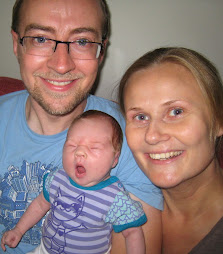
In Copenhagen we saw the large mailbox pictured above. We understand they are becoming more widespread in Denmark these days. If we have got it right the idea is that you can pick up your parcels around the clock all days of the year - rather than being restricted to the opening hours of the post office.
Since we don't live in Denmark we haven't tried the system. But we would like to add here that in Sweden there are very few actual post offices. In stead the post service cooperates with some nationwide chains. Thus, one most often has to pick up (and send) mail at either Pressbyrån (kiosk) or ICA Nära (small grocery store).
 And speaking of Sweden that is precisely where we found the little mailbox with the squirrel pictured on the right. To be more exact we found it on Lidingö along our new bike-way to and from work.
And speaking of Sweden that is precisely where we found the little mailbox with the squirrel pictured on the right. To be more exact we found it on Lidingö along our new bike-way to and from work.Lastly we want to mention a special kind of mailbox which we didn't actually see - we only saw the sign pictured below. We can inform those not proficient in French that we are talking about a special mailbox for motorists.


















